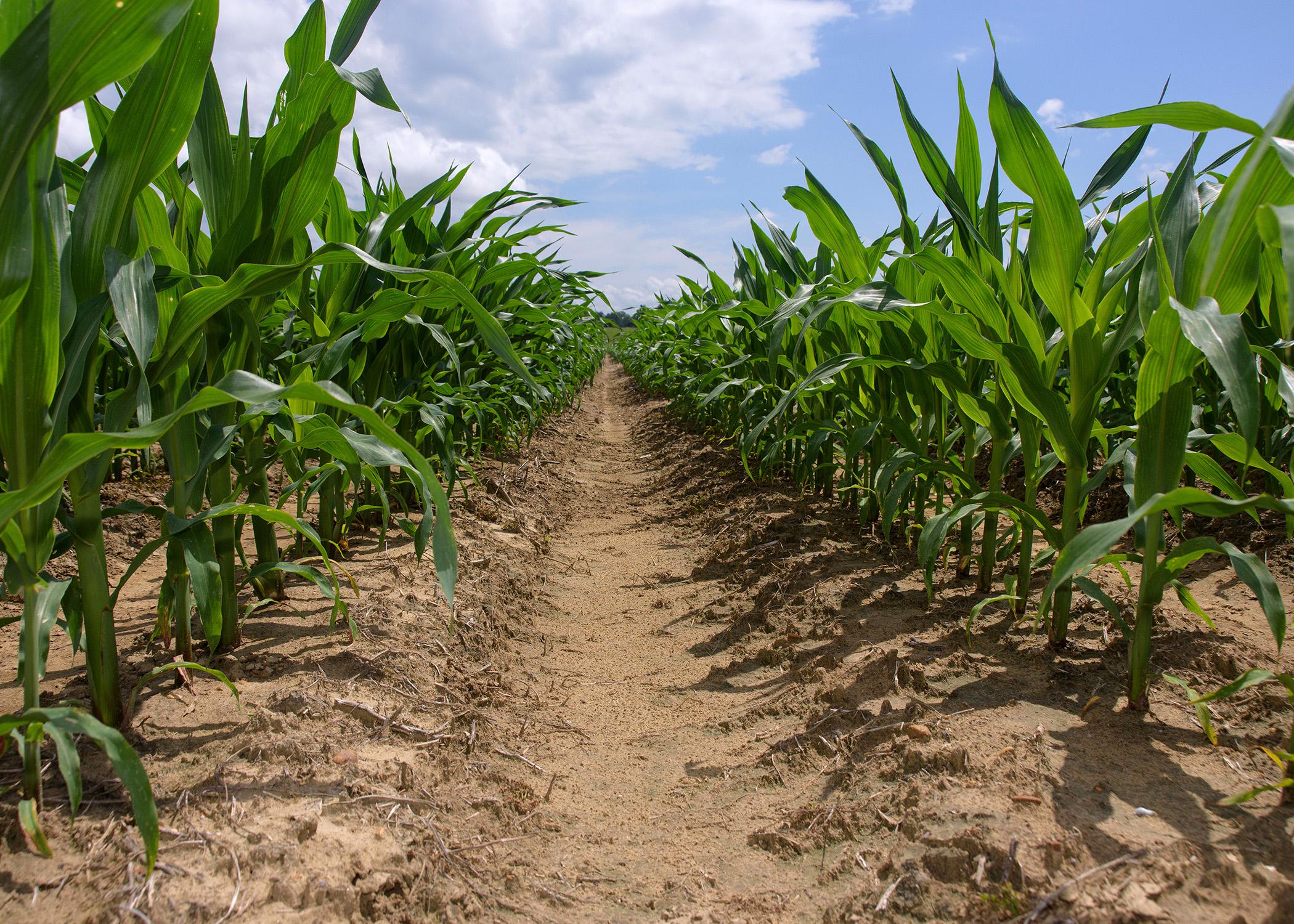Corn planting nears close despite weather delays
RAYMOND, Miss. -- Despite wet spring weather that pushed planting beyond the typical window, Mississippi corn producers have essentially completed planting and the crop is in good condition.
“We’ve had a lot of frequent rainfall, which has restricted our planting opportunities, caused delays and may result in fewer acres,” said Erick Larson, corn specialist with the Mississippi State University Extension Service. “We intended to plant less corn than last year to start with, but we’ve not had a lot of cooperation from Mother Nature.”
According to the May 12 Crop Progress and Condition Report from the U.S. Department of Agriculture National Agricultural Statistics Service, corn acres are 96% planted. Eighty-eight percent of those acres have emerged with 60% in good condition, 24% in fair condition and 14% in excellent condition.
Larson said he estimates producers will plant about 500,000 acres of corn, down from 790,000 acres in 2023.
“I expect corn acreage to be down by about 25% or more,” said Larson, who is also a research professor in the MSU Department of Plant and Soil Sciences. “Rainy weather may restrict corn acreage beyond already lower intentions this year. Soybeans, cotton and corn are the main competitors for row crop acreage in Mississippi. I expect we’ll plant more soybean and cotton this year.”
Producers must make those decisions each year based on several factors, including input costs, market prices and planting conditions.
Weather has been a key factor for corn producers this year. Ideally, producers want to get corn planted between mid-March and the end of April. This gives plants the best opportunity for reproductive development, a critical growth stage, during the early summer when conditions are most favorable.
But planting windows have been few and far between this season, possibly pushing some producers beyond the May 10 insurance planting deadline.
“After one to two days of rain, you need five to six days of sunny weather to allow the field to dry out enough to allow farmers to get it planted,” Larson explained. “We just haven’t had that many planting windows this year.
“Plantings have been delayed for corn compared to normal. We’ll likely lag behind our historical numbers in all crop plantings if rainy weather persists through May,” he said.
Of the plants that have emerged, Larson said they are in good condition.
“We’ve had some typical complications that come with frequent rainfall,” he said. “A lot of rain limits our ability to make fertilizer and herbicide applications on time. Heavy rainfall has also caused temporary flooding, creating mortality, stunting and development issues where downpours wash away the tops of raised beds, exposing plant roots. But we haven’t had any huge catastrophic-type issues so far.”
Will Maples, Extension agricultural economist, said weather is the main concern at this point in the season when it comes to markets.
“Some western corn belt states have been in drought conditions, but recent rains have improved the situation,” Maples said. “Any type of severe weather event in the corn belt would impact corn prices. But because Mississippi is not a major corn-producing region, market impacts would be more localized for our producers. Any major weather event would likely strengthen basis in the region but would not have a great impact on actual futures price levels.”
According to the USDA World Agricultural Supply and Demand Estimates for May, corn supplies will be higher and prices lower. This monthly report provides annual forecasts for various commodities worldwide and is prepared by the World Agricultural Outlook Board.
“USDA is projecting U.S. corn ending stocks at 2.1 billion bushels, which is similar to last year's level,” said Will Maples, Extension agricultural economist. “This will continue to depress prices.”
Average farm prices for corn are estimated at $4.40 per bushel for the 2024-2025 marketing year.
“These are early projections, though, and weather will be the key thing to pay attention to over the next few months. Producers should be ready to take advantage of any weather-driven market rallies,” Maples said.








